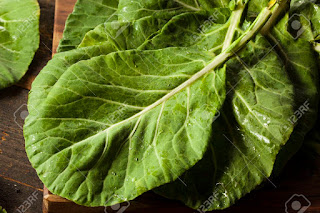DEER MATING
(RUTTING) SEASON
White-tailed
deer (Odocoileus virginianus)
are one of the most easily recognized wildlife species in New Jersey. Highly
valued as a major game species, white-tailed deer are increasingly perceived as
nuisance animals because of their negative interactions with humans,
particularly in densely populated areas like Union County. Agricultural crop
destruction, private property damage, deer-vehicle collisions, and tick-borne
illnesses are all important points to consider in the management of deer. Deer
also offer amenity and economic value for hunting and ecological benefits
(i.e., seed dispersal, increased plant diversity) when they occur at
appropriate densities.
Deer are most active seasonally from mid-September through November during the peak of the breeding season (rut). Activity increases shortly after sunrise and between sunset and midnight. Deer crossings commonly occur where roads cause fragmentation of intact forest or separate forest from agricultural lands. Heightened driver awareness in these areas during peak activity periods can help reduce deer-vehicle collisions. Obeying the speed limit and using high-beam headlights can also increase driver reaction time.
Between
July 1, 2010 and June 30, 2011, there were over 1 million deer-related collisions
in the U.S. From 2011-2012, more than 31,192 deer-vehicle collisions occurred
in New Jersey alone, making the likelihood of hitting a deer 1 in 191. Although
the frequency of deer-vehicle collisions is largely influenced by human
population size, road density, deer density, time of year, habitat, road type,
and speed limit, defensive driving behavior has been shown to minimize accident
risk.
White-tailed
deer are large mammals generally ranging in size from 50-200 lbs. While some
adult males (bucks) can grow up to 3.5 ft tall at shoulder height and weigh up
to 200 lbs, an average buck in New Jersey weighs around 150 lbs. Females (does)
are typically smaller and average around 100 pounds. Their summer coats are
reddish-brown and gradually fade to a brownish-grey in the winter. Deer under
the age of 1 yr (fawns) are 4-8 lbs at birth and have red coats with white
spots, which help to conceal them from predators. As young deer grow their
first winter coat, the white spots disappear. In April, bucks begin growing
their antlers, which are covered in a "velvet" layer of skin,
consisting of soft hairs and blood vessels that provide nutrients to the
growing tissue. Bucks then rub off this soft layer once their antlers are fully
grown. The size of these antlers is determined by age and nutrition levels.
Antlers are shed annually each winter.
Does
generally reach sexual maturity at 2 years of age. However, reproductive
potential is directly related to nutritional state, so with good resources,
fawns as young as 6 months can begin breeding. This phenomenon is common in New
Jersey. Younger animals and new mothers usually produce one fawn, with twins
becoming more common in yearling does; triplet litters may occur in older does.
Deer breed from late September through January, with the peak of breeding
(rutting) activity occurring in mid-November. Fawns are born beginning in early
May.
By
feeding on or damaging tree seedlings and saplings, an overabundant deer
population prevents forests from naturally regenerating. Habitat changes caused
by overbrowsing are also detrimental to native birds, small mammals, and
invertebrates. Many birds nest in native vegetation on or close to the forest
floor, while others rely on the constant supply of insects within the leaf
litter and in vegetation to feed themselves and their young. The absence of
nuts and berries in over browsed forests also leads to a decrease in food
supply for small mammals and migratory birds, making it difficult for them to
survive at critical times during the year.
For small-scale gardens and flowerbeds, taste-based or odor-based repellents can be effective at discouraging deer. Only certain commercial products are approved for use on garden vegetables or fruit trees. Common repellent ingredients include urine from a natural predator, such as coyote or bobcat; hot sauce derived from capsaicin in pepper; and putrescent eggs. Attractiveness and palatability of the plants, deer hunger, amount of rainfall, and local food preference are among factors influencing repellent effectiveness. To maximize success, repellents should be used with additional deer management tactics in an integrated approach.
The information in this article is from
An Overview of
White-Tailed Deer Status and Management in New Jersey
Fact Sheet FS1202
Brooke Maslo, Extension Specialist, Wildlife Ecology
Samantha Wehman, Technician



















